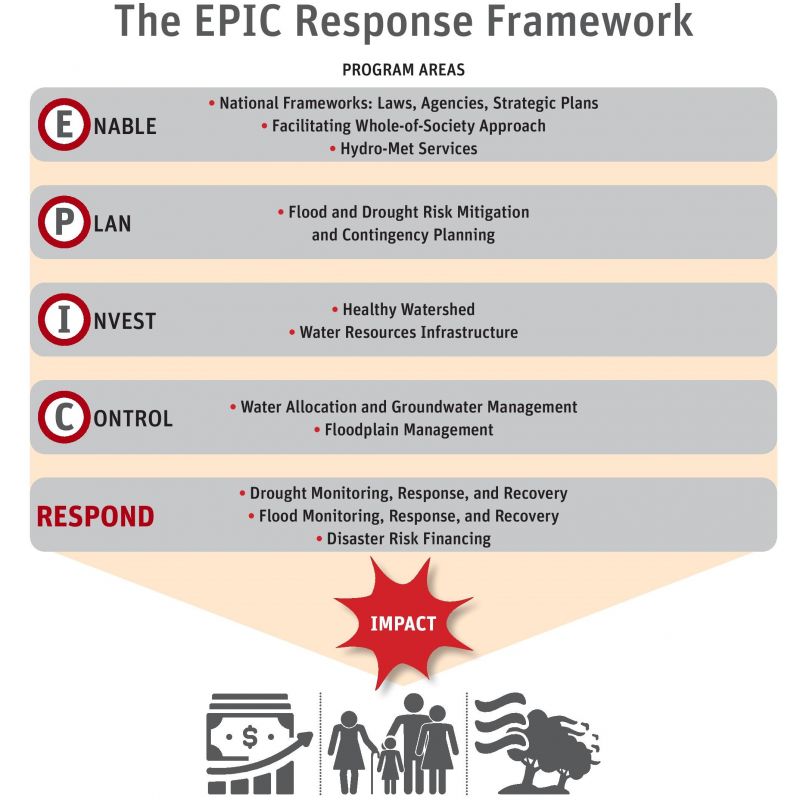You are here
World Bank Guideline Published: “An EPIC Response: Innovative Governance for Flood and Drought Risk Management”
World Bank Guideline Published: “An EPIC Response: Innovative Governance for Flood and Drought Risk Management”
Floods and droughts have regularly made the news in 2021. And the scale of the crisis behind the headlines is stark.
Over the last two decades, floods and droughts – two of the most devastating consequences of the climate crisis -- have affected 3 billion people, with staggering costs in human suffering and economic loss.
Rising global temperatures increase the moisture the atmosphere can hold, resulting in storms and heavy rains, but paradoxically also more intense dry spells as more water evaporates from the land and global weather patterns change. These changes to the hydrological cycle can deliver stronger, longer droughts and floods, and bring these hazards to parts of the globe that have not seen them in living memory. It is difficult to point to a region or country that will not face more challenges managing these extremes in the very near future.
Societies need to adapt, and governments must prioritize, accelerate, and scale up their response mechanisms in this decade. This requires innovative governance and risk management to navigate uncertainty, reduce duplication, make more efficient use of public resources, and protect communities, economies, and ecosystems.
A new report titled An EPIC Response: Innovative Governance for Flood and Drought Risk Management offers guidance on these critical matters. Launched on World Day to Combat Desertification and Drought (June 17), the report presents a framework to manage the growing risks of floods and droughts in a changed climate. The framework is known as the EPIC Response, a mnemonic for its key elements:
- E: an enabling environment of policies, laws, agencies, strategic plans, and information
- P: planning at all levels to prioritize risk mitigation
- I: investing in watersheds and water resources infrastructure
- C: controlling the use of land and water resources to reduce exposure and vulnerability
- Response: monitoring, responding, and recovering from floods and droughts

(Source: World Bank)
For more information:



